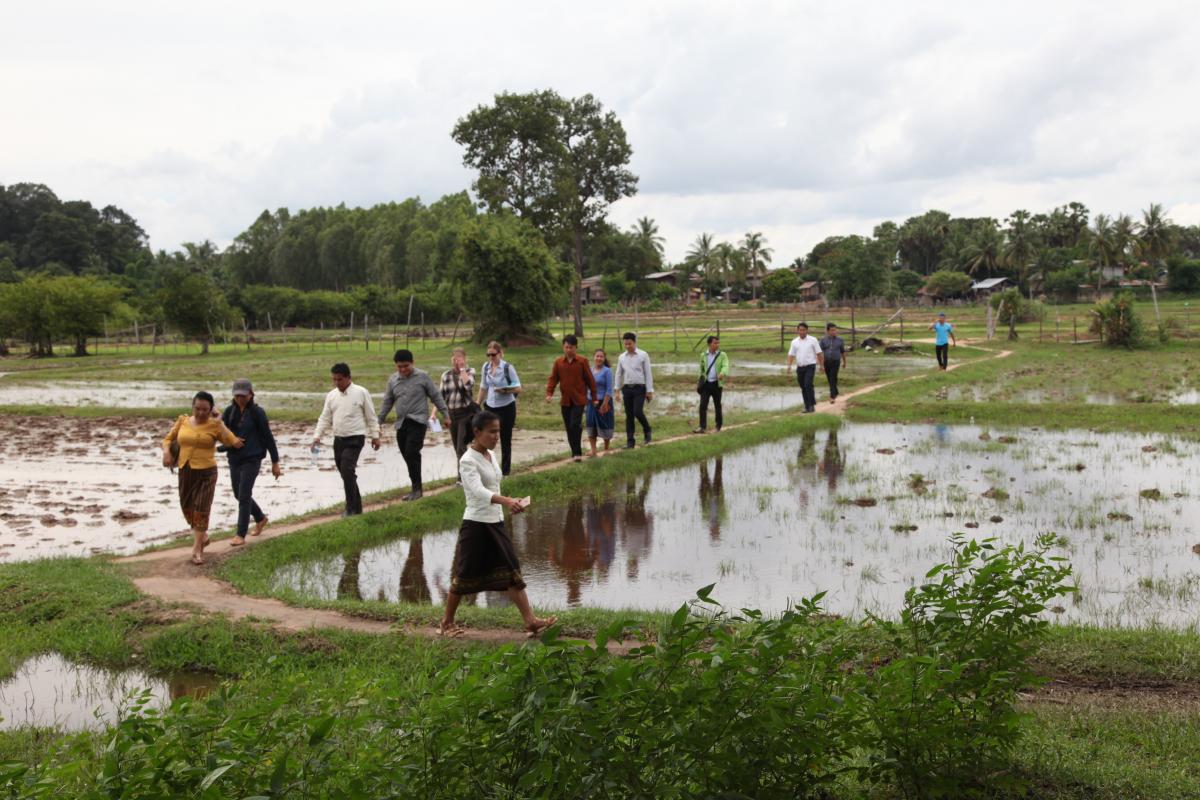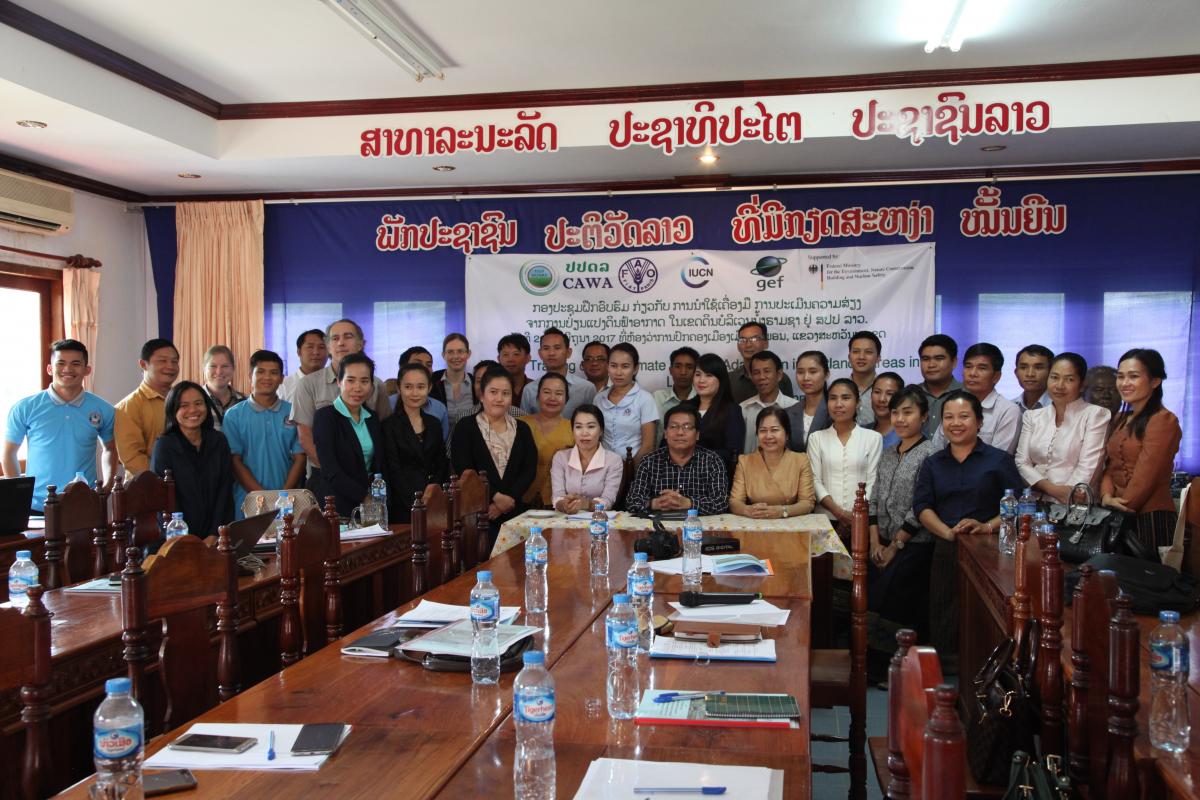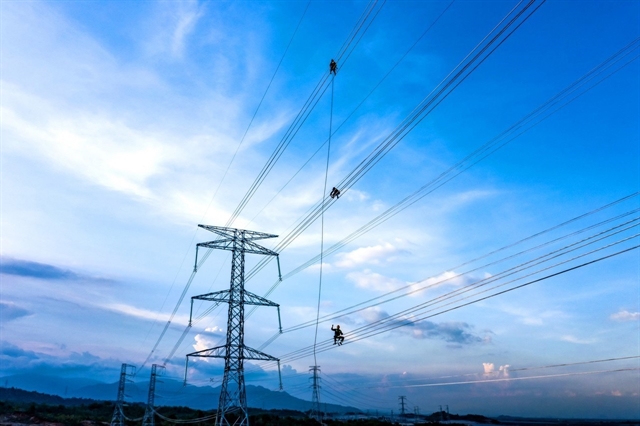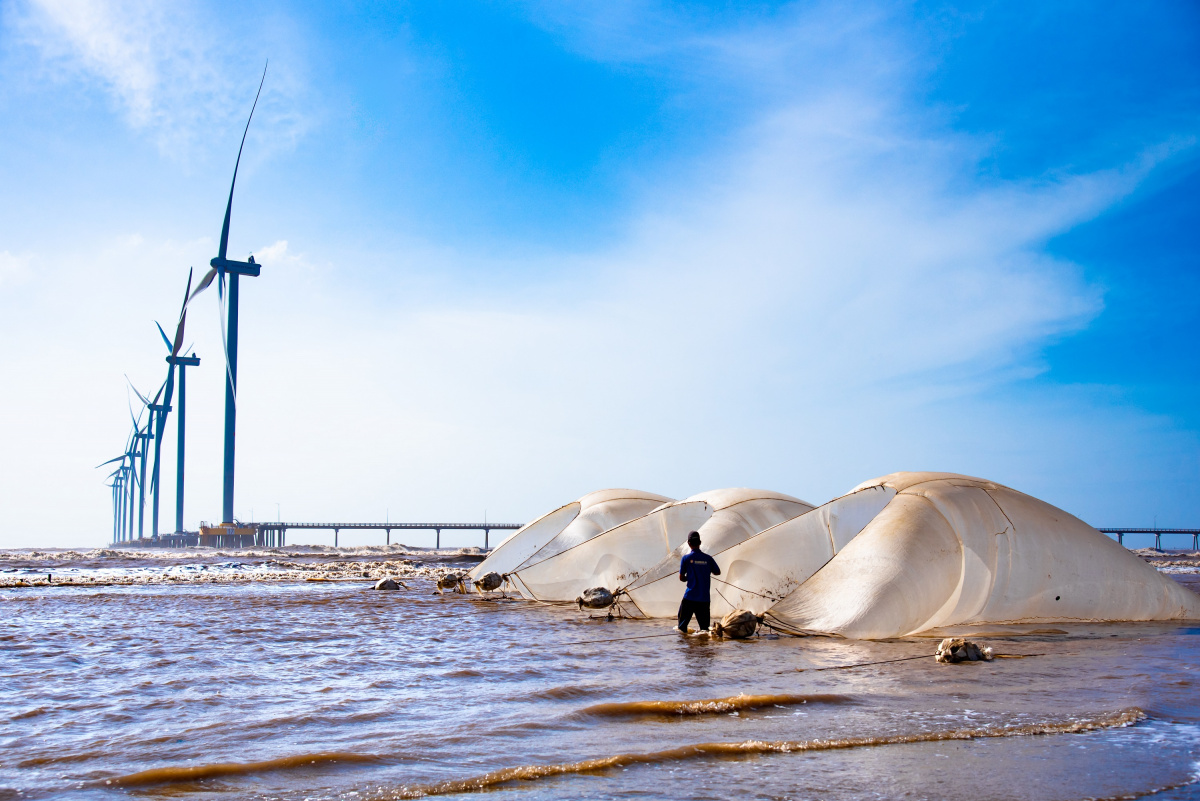New tools to assess vulnerability of wetlands in the Mekong
From June 19 to 21, IUCN staff, partners, and local officials from the Xe Champhone and Beung Kiat Ngong Ramsar sites in Lao PDR gathered in Champhone District for a training on the use of a new series of tools to assess the vulnerability of the areas’ wetlands. The vulnerability assessment or “VA” tools allow stakeholders to explore the linkages between the ecological vulnerability of the wetlands and the socio-economic vulnerability of people who are dependent on resources provided by the wetlands.
Designated Ramsar sites of international importance in 2010, the Xe Champhone and Beung Kiat Ngong wetlands contain key habitats such as river channels, peatlands, freshwater marshes, and seasonally flooded forests. Xe Champhone is home to several important species including the critically endangered Siamese crocodile (Crocodylus siamensis), and an estimated 95% of people living in Champhone District rely on the wetland for crop production, fishing, hunting, collection of non-timber forest products such as snails or wild vegetables, and more. Beung Kiat Ngong supports several thousands of people as well, largely through traditional rice cultivation and wild-capture fisheries, and serves as an important spawning ground for fish.
Today, these species, habitats, and livelihoods face a variety of threats from changes in climate as well as human activities. Rising temperatures and shifting rainfall patterns are leading to an increase in both droughts and floods, causing erosion and changes in salinity levels which in turn can greatly impact agricultural productivity and alter aquatic habitats.
The VA tools include a comprehensive series of survey questions that allow managers to identify individual risks and their contributions to overall vulnerability of species, habitats, and livelihoods in or adjacent to the sites. As part of the training, participants visited wetland sites and conducted household interviews of local villagers to gain a sense of the impacts from these climate and development threats. Villagers cited droughts as a main threat to local livelihoods such as fishing, rice cultivation, and livestock raising. While flooding is easier to cope with than drought in the short term, heavy rains tend to increase sedimentation in the wetlands, ultimately leading to decreased water levels which negatively impact fish habitat. Invasive weeds such as water hyacinth (Eichhornia crassipes) are also affecting the integrity of lakes by creating floating mats that cut off oxygen availability to fish. Removal of the water hyacinth not only allows water bodies to be inhabited by fish but also provides space for traditional activities such as boating.
“Rice cultivation, fisheries and livestock are all affected by climate change,” said Ms. Keooudone CHOULAMONTHR , Deputy head of Champhone District of Natural Resource and Environment and training participant. “Flooding and erosion destroy fish habitats. The waters are shallower due to sedimentation, which means the river does not flow like it once did. Alien species populations also increase during floods.”
IUCN, under its Climate Adaptation in Wetland Areas (CAWA) and Mekong WET projects, and in partnership with the Indo-Burma Ramsar Regional Initiative (IBRRI), adapted the new tools from previous VA tools prepared for the Mekong River Commission (MRC) by the International Centre for Environmental Management (ICEM). The tools were initially chosen due to their straightforward methodology and ability to compare results between wetland sites. The new VA tools include a stronger focus on local participation and adaptation planning—requiring local stakeholders to discuss threats to the wetlands, evaluate the effectiveness of current coping strategies, and prioritize adaptation measures.
Mr. Xavier Bouan, Chief Technical Advisor of the CAWA project at the Food and Agriculture Organization of the United Nations (FAO), expressed his optimism about the tools’ use at the local level. “There is a real chance for provincial and district staff to be involved in the process of the vulnerability assessment,” he said. “Similar assessments might have been done by external experts in the past, but this time it gives ownership of the VA to the local people.”
The new tools also place a greater emphasis on gender—women play an important role in the VA process, providing a critical perspective on gendered use of wetland resources.
“There are some key differences between this assessment and those that have been done in the past,” said Dr. Andrew Wyatt, Mekong Delta Program Manager for IUCN Vietnam. “Previously, there was no gender analysis of wetland uses, threats, impacts.” Just from the field training, household interviews conducted by participants revealed that women and men ranked the importance of wetland resources differently. Also embedded in the new tools is the recognition of non-climate threats. “The VAs will be useful in helping communities adapt through climate actions that recognise development threats,” Dr. Wyatt noted, “and to assist managers to identify ways they can support communities to take climate action.”
Now that the training is complete, teams will apply the VA tools in the field and use the results to inform management plans for the Xe Champhone and Beung Kiat Ngong sites. The assessments build on previous studies carried out in the two sites, including in particular those conducted by MRC/ICEM and IUCN.
The workshop was attended by representatives from the Lao Ministry of Natural Resources and Environment (MoNRE), the Provincial and District Offices of Natural Resources and Environment (PONRE and DONRE) of Savannakhet and Champasak Provinces, the Provincial and District Agriculture and Forestry Offices (PAFO and DAFO) of these two provinces, the UN Food and Agriculture Organization (FAO), Savannakhet University, Champasak University, and IUCN.
_____________________________________________________________________________________
The vulnerability assessments of these sites contribute to two regional projects, the UN Food and Agriculture Organization (FAO) led Climate Adaptation in Wetland Areas (CAWA) and the German Federal Ministry for the Environment, Nature Conservation, Building and Nuclear Safety (BMUB) funded Mekong WET: Building Resilience of Wetlands in the Lower Mekong Region through a Ramsar Regional Initiative. Xe Champhone and Beung Kiat Ngong comprise the two Ramsar sites in the CAWA project and are the first of ten sites in the Mekong WET project to have received the training. Lessons learned from the vulnerability assessments conducted in Lao PDR will be shared with other Ramsar sites in the region.







